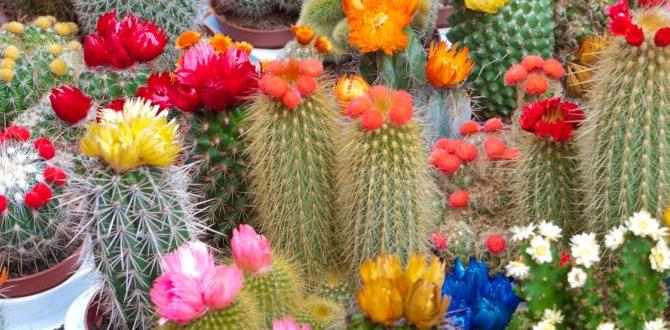Imagine stepping into your backyard and being greeted by vibrant, colorful blooms. Hibiscus plants can bring that joy to your home. Caring for hibiscus outdoors is not just about the flowers; it’s also a fun adventure! Have you ever wondered how to make these plants thrive?
Hibiscus loves the sun and warm weather. They can grow tall and big, making them perfect for gardens or patios. Did you know some hibiscus varieties can reach up to 8 feet high? This transformation can amaze any gardener!
But, just like any plant, hibiscus requires care. You might ask, what do they need to stay healthy? Water, sunlight, and the right soil play important roles. Learning how to care for hibiscus outdoors can feel like a puzzle. However, with a little guidance, anyone can solve it!
In this article, we will explore easy tips and tricks for growing hibiscus outdoors. Get ready to discover how to keep your plants happy and blooming all season long!
Caring For Hibiscus Outdoors: Tips For Thriving Plants

Caring for Hibiscus Outdoors
Hibiscus plants bring vibrant colors to your garden. To care for them outdoors, choose a sunny spot. They need at least six hours of sunlight each day. Water them regularly, but avoid soggy soil. Did you know hibiscus flowers can bloom every day? By ensuring proper drainage and consistent moisture, you can enjoy their beautiful flowers. Fertilizing in the spring helps them thrive. With a little love, your hibiscus will flourish in your outdoor space!Choosing the Right Location
Importance of sunlight for hibiscus growth. Factors to consider: wind, drainage, and soil type.Finding the perfect spot for your hibiscus can be like a treasure hunt! These plants love sunshine. Aim for a location with plenty of bright light for at least six hours a day. Also, keep an eye on wind levels; hibiscus don’t fancy heavy gusts that might blow off their pretty blooms. Good drainage is crucial, too! Make sure water doesn’t pool around their roots. Lastly, they prefer rich, well-draining soil, so choose wisely!
| Factor | Best Condition |
|---|---|
| Sunlight | 6+ hours |
| Wind | Low |
| Drainage | Excellent |
| Soil Type | Rich and well-draining |
Soil Preparation and Planting
Best soil types and amendments for hibiscus. Stepbystep planting instructions.Choosing the right soil is key for happy hibiscus plants. They love sandy loam or clay soil. These types drain well but still hold moisture. Adding compost can help the soil stay rich. Here’s how to plant your hibiscus:
- Dig a hole twice the size of the roots.
- Mix in compost with the removed soil.
- Place the plant in the hole.
- Fill it with the soil mix.
- Water it well.
Hibiscus thrive with proper planting and care!
What soil do hibiscus plants need?
Hibiscus plants prefer sandy loam or clay soil. Combining these with compost creates a nutritious environment for them.
Watering Requirements
Frequency and amount of water for healthy growth. Signs of overwatering and underwatering.Hibiscus plants love water, but just like Goldilocks, they need it to be *just right*. Water them about once a week during sunny days. Make sure the soil feels a bit dry before you splash them again. Too much water can lead to sad, droopy leaves, while too little makes them cranky and thirsty. Watch for signs like wilting or yellowing leaves; they’re like little plant complaints!
| Signs | Description |
|---|---|
| Overwatering | Leaves turn yellow and may droop. |
| Underwatering | Leaves become wilted and crispy. |
Nutrient Management
Types of fertilizers suitable for hibiscus. Recommended feeding schedule throughout the growing season.Nurturing hibiscus plants requires the right nutrients. Use fertilizers high in potassium and phosphorus to boost blooms. A balanced fertilizer works well, too. Here’s a simple feeding schedule:
- Early spring: Feed with a fertilizer.
- Mid-summer: Add a second dose for growth.
- Late summer: Stop feeding to prepare for winter.
These tips help your hibiscus thrive outdoors!
What type of fertilizer is best for hibiscus?
For hibiscus, use fertilizers rich in potassium and phosphorus to ensure vibrant blossoms.Recommended feeding schedule:
- Early spring: Fertilize to encourage growth.
- Summer: A second feeding supports blooming.
- Late summer: Stop feeding as plants rest.
Pest and Disease Control
Common pests affecting hibiscus and prevention tips. Identifying and managing diseases.Pests are not fans of hibiscus. Common troublemakers include aphids, whiteflies, and spider mites. They suck the plant’s juice, leaving your flowers sad and droopy. To prevent these pests, regularly check your plants and keep them clean. A spray of water can knock off some pests. If they party too hard, insecticidal soap is a good dance partner.
Diseases like root rot and leaf spot can also crash the hibiscus party. Stay alert for wilting leaves or dark spots. Water the plants at the base, avoiding the leaves, to keep them dry and happy. If you see a problem, act fast! Remove affected parts and apply a fungicide if needed. Remember, healthy hibiscus equals happy gardening!
| Pest/Disease | Signs | Prevention/Treatment |
|---|---|---|
| Aphids | Wrinkled leaves | Wash off or use insecticidal soap |
| Whiteflies | Sticky leaves | Yellow sticky traps |
| Root Rot | Wilting, yellowing leaves | Good drainage, avoid overwatering |
| Leaf Spot | Dark spots on leaves | Remove affected leaves and apply fungicide |
Pruning and Maintenance Techniques
Best practices for pruning hibiscus plants. General maintenance tips to encourage blooming.Keeping hibiscus happy is easy! Start with pruning. Trim dead or wilted branches to encourage new growth. This helps your plant look nice and bushy, just like a stylish haircut makes us look fab! For best blooming, keep your hibiscus in sunny spots and water them regularly. They love it! Here’s a quick tips table:
| Task | Frequency |
|---|---|
| Prune | Every spring |
| Water | 2-3 times a week |
| Fertilize | Once a month |
Give your hibiscus a little love and attention. It will reward you with bright, cheerful flowers that bring joy to your garden!
Seasonal Care Adjustments
How to prepare hibiscus for different seasons. Special care tips for winter protection.Caring for your hibiscus means adjusting your routine with the changing seasons. During summer, keep them hydrated and in full sun. As the leaves start to fall, reduce watering—too much moisture can make them sulk. In winter, bring your hibiscus indoors or give them a cozy blanket of mulch for outdoor plants. They don’t fancy frost! A well-placed fuzzy sock can help keep their roots warm. Here’s a handy table with seasonal tips:
| Season | Care Tips |
|---|---|
| Spring | Start fertilizing as blooms appear. |
| Summer | Water regularly and give full sunlight. |
| Fall | Decrease watering; prepare for cold. |
| Winter | Move indoors or cover with mulch. |
Common Problems and Solutions
Troubleshooting common hibiscus issues. FAQs related to hibiscus care outdoors.Caring for hibiscus outdoors can be fun, yet sometimes tricky. One common issue is wilting leaves. This usually means your plant needs water. Always check the soil before giving it a drink! Hibiscus love sun, but too much can scorch them. If leaves turn yellow, you might need to check for pests or nutrient issues. Don’t panic! Here’s a quick table of common problems and their easy fixes:
| Problem | Solution |
|---|---|
| Wilting Leaves | Give it some water! |
| Yellow Leaves | Check for pests! |
| Not Flowering | Provide more sunlight! |
FAQ: “How much sun does my hibiscus need?” They thrive in full sun! Just make sure they have some shade during the hottest part of the day. Problems happen, but with a little care and humor, your hibiscus can bloom beautifully!
Conclusion
In summary, caring for hibiscus outdoors means providing sunlight, water, and good soil. Remember to prune regularly for healthy growth. Watch for pests and treat them quickly. You can create a beautiful outdoor space with these tips! For more detailed information, check gardening books or websites. Happy gardening, and enjoy your hibiscus blooms!FAQs
What Are The Ideal Sunlight Conditions For Growing Hibiscus Outdoors?Hibiscus plants love the sun! They need at least six hours of sunlight each day. Choose a spot that gets bright, direct sunlight. If they get too little light, they won’t bloom well. So, make sure your hibiscus gets plenty of sunshine!
How Often Should I Water My Outdoor Hibiscus Plants To Ensure Optimal Growth?You should water your outdoor hibiscus plants about once a week. If it’s really hot or dry, they may need more water. Check the soil; if it’s dry an inch down, give them a drink. Make sure the water helps them grow strong and healthy!
What Type Of Soil Is Best For Planting Hibiscus Outdoors, And How Should It Be Prepared?The best soil for planting hibiscus is rich, well-draining soil. You can use a mix of garden soil and compost. First, dig a hole where you want to plant. Then, add the soil mix and make sure it’s loose and fluffy. This helps the roots grow strong and get enough water.
How Can I Protect My Outdoor Hibiscus From Pests And Diseases?To protect your outdoor hibiscus, you should check the plants often for bugs. You can use soapy water to wash off small pests. Make sure to water your plants properly and give them enough sunlight. Healthy plants are less likely to get sick. If you see any problems, ask an adult for help right away!
When Is The Best Time To Fertilize Outdoor Hibiscus, And What Type Of Fertilizer Should I Use?The best time to fertilize outdoor hibiscus is in early spring when new leaves start to grow. You should use a balanced fertilizer that has equal numbers, like 10-10-10. This kind helps the plant grow strong and healthy. Remember to water your hibiscus well after you fertilize it!








